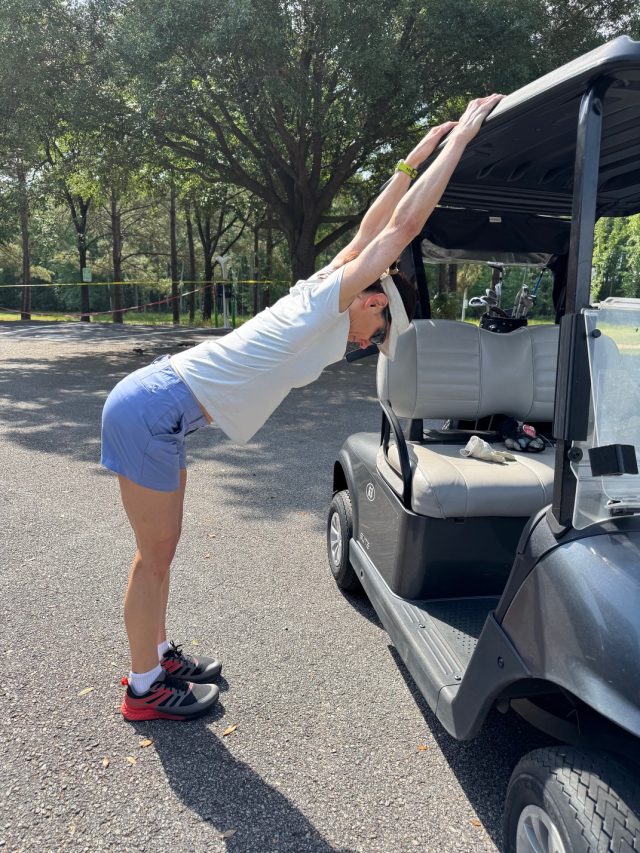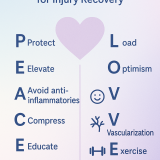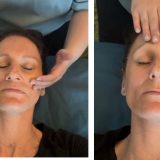Calculate Your Age-adjusted heart rate training zone
Did you know that heart rate training zones decrease with age? Findings suggest that the previously used Kavronen equation (220 minus age, minus resting heart rate) underestimated Heart Rate max in older adults. This would have the effect of underestimating the true level of physical stress imposed during exercise testing and the appropriate intensity of prescribed exercise programs. Science changes as does the body.
So how hard should you be working out to get the most out of your workouts? An easy no calculation way might be to alternate hard and easy workout weeks or exercise hard 2 weeks then 1 week easier. Adding more rest days is also another method to help recover from hard workouts. This method isn’t scientific though and keep in mind what’s hard for one person may just be a warm up for another individual.
This blog post IS about science so let’s discuss a little about why you should monitor your heart rate and how to get the most using your heart rate training zones. Yours will be determined by what your goals are as well as how quickly your body recovers (more on this in the science below).
Too often, workouts at a high intensity without proper nutrition can lead to a chronic levels of the stress hormone cortisol lingering in the body which can lower fat metabolism. This can mean, as hard as you are trying to workout your body is responding to these hard workouts as stress which can halt weight loss.
Weight training or interval training workouts when the body is properly rested can actually initiate the good “acute” response of cortisol in the form of increasing the human growth hormone. The human growth hormone can increase fat metabolism by reducing body fat, increase lean muscle, slow cortisol release in the body, improve athletic performance & builds up connective tissue which may reduce injuries.
Factors that may slow or impede recovery that may need to be addressed include:
- Fuel sources are depleted
- Temperature: as temperature increases the body has to work harder, and this increased work results in a higher heart rate.
- Resting heart rate: even though you might feel okay at rest, your body is working harder to repair itself, and you’ll notice an elevated heart rate. Monitoring your resting heart rate and your exercise heart rate will allow you to make appropriate adjustments such as eating more or taking a day off when your rate is elevated.
Special note on certain modes of activity: Non-weight bearing exercise such as cycling and swimming can be underrated. Specifically, swimming heart rate will be 10 beats lower per minute. Runners are always frustrated when they cross train and can’t see the same calorie burn on their high-tech devices compared to when they log the miles.
Here’s new age-adjusted heart rate training zone formula
- Take your resting heart rate (RHR) for 5 days and calculate the average. This is best done before your feet even hit the floor straight out of bed in the morning. Just keep some paper and a stop watch nearby.
- Calculate your estimated Maximal Heart Rate (MHR) using (208 – 0.7 x your age in years)
- Determine your Heart Rate Reserve (HRR) or the difference between MHR and RHR
HRR = MHR – RHR (this is working range at your most intense to your resting heart rate) - Calculate the different Target heart rates by percentage of efforts or Zones as I will call them.
- Zone 1: 50-60% (Use 50-55% if you want to exercise but need to recover, like an easy 3 mile run for a person training for a half or full marathon.)
Zone 2: 60-70% Aerobic Training Zone(with oxygen) for training benefit, long cardio sessions, easy run or recovery runs.
Zone 3: 70-80% Aerobic Training (with oxygen) marathon pace training runs 75-85%
Zone 4: 80-90% Anaerobic Training (without oxygen) high intensity effort 85-90% tempo runs, too much training in this zone may equal overtraining and injury.
Zone 5: Maximal effort still qualifies as the 90% effort above and would only be used in maximal effort for sprinting/speed work lasting no more than 90 seconds.
Compare the above formula to this old formula below based on the example (me at the time of this blog post). As you can see Old formula 220-age minus resting heart rate (rhr) x 60-90% effort + rhr tallies me much differently than the new age adjusted formula. Check out my text in in red below depicting the new formula values.
example: 220 – 42 years – 50 rhr = 128 bpm (beats per minute). I’ve rounded up as necessary.
128×60% effort =76.8+50 rhr=126 bpm or 21 beats per 10 seconds New formula 157bpm or 26beats/10sec
128×70% effort= 89.6 50 rhr=140 bpm or 23 beats per 10 seconds New formula 174bpm or 29beats/10 sec
128×80% effort=102.4+50 rhr=152 bpm or 25 beats per 10 seconds New formula 192bpm or 32beats/10 sec
128×90% effort=115.2+ 50rhr=165 bpm or 28 beats per 10 seconds New formula 210bpm or 35 beats/10 sec
Regardless if you use the heart rate formula or not, all athletes and individuals need to listen to their beating heart and adjust training as needed. May the information you just learned help you to get your body body ever.
Tonya Tittle, M.S., ASCSM
Owner/Director of Training
Energy Fitness, Memphis, TN
Not a client? Live in town and interested in our personal training or nutrition coaching? Click here for a FREE Consult (value $87) or give us a call at 901-466-6242
Check out our customized online training ($40-$80) here: Online Customized Training
Interested in our Massage or Body Wraps? Click here.
Energy Fitness, 552 South Main Street, Memphis, TN 38103




